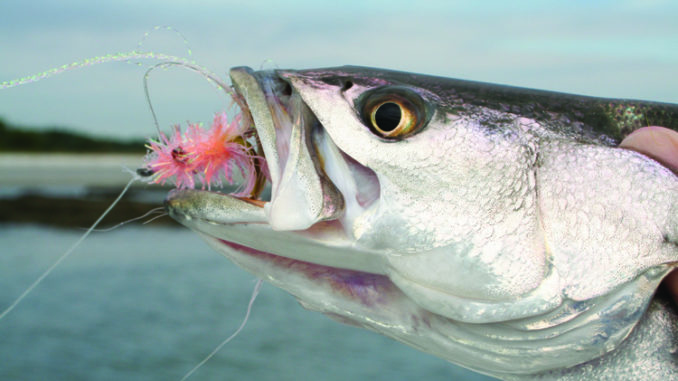
Winter weather can be blustery at times, but often the wind is dead calm, and those days are perfect for fly fishing.
As the water cools, the fish school more closely and food becomes more scarce on the flats. Redfish become more sensitive to objects falling into the water near them. Jigs or spoons land with a plop that can scatter a school. Flies, on the other hand, land in the water with barely a ripple, and the hungry fish will eat them.
When the fish are still actively feeding, jigs and spoons catch plenty of fish, but as the water becomes much cooler, it gets frustrating seeing whole schools of redfish flush away and ignore well-placed jig presentations. That’s not to say that redfish will hit every fly thrown near them in cold weather, because they won’t, but a good fly caster will generally out-fish a good spin fisherman in the cold weather.
For trout in December, a fly rod will not necessarily out-fish a jig, but it would be neck and neck. Schools of trout generally hold in slightly deeper water — three to four feet — than redfish. When they are in front of oysters or near points or shoreline grass, a 6-weight fly rod with a 250-grain shooting head or a full sinking fly line, throwing Clousers, Lefty’s deceivers or Half-and-Halfs is a great combination for fast and exciting action.
Editor’s note: This story is part of the article titled Better late than never in the December issue of South Carolina Sportsman magazine, now available on newsstands or in a new digital edition.

Be the first to comment